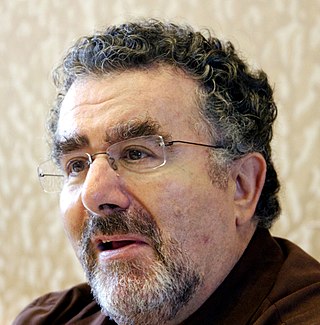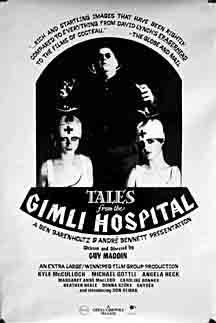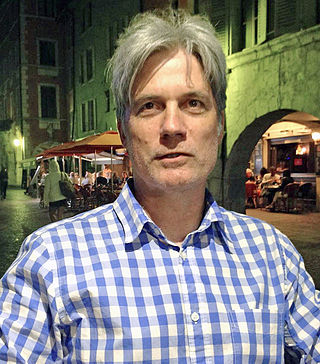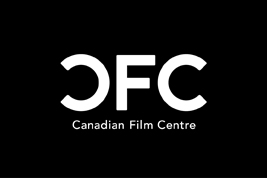
The National Film Board of Canada is Canada's public film and digital media producer and distributor. An agency of the Government of Canada, the NFB produces and distributes documentary films, animation, web documentaries, and alternative dramas. In total, the NFB has produced over 13,000 productions since its inception, which have won over 5,000 awards. The NFB reports to the Parliament of Canada through the Minister of Canadian Heritage. It has bilingual production programs and branches in English and French, including multicultural-related documentaries.
Telefilm Canada is a Crown corporation reporting to Canada's federal government through the Minister of Canadian Heritage. Headquartered in Montreal, Telefilm provides services to the Canadian audiovisual industry with four regional offices in Vancouver, British Columbia; Toronto, Ontario; Montreal, Quebec; and Halifax, Nova Scotia. The primary mandate of the corporation is to finance and promote Canadian productions through its various funds and programs.

Cinema in Canada dates back to the earliest known display of film in Saint-Laurent, Quebec, in 1896. The film industry in Canada has been dominated by the United States, which has utilized Canada as a shooting location and to bypass British film quota laws, throughout its history. Canadian filmmakers, English and French, have been active in the development of cinema in the United States.

Saul Hersh Rubinek is a Canadian actor, director, producer, and playwright.

I've Heard the Mermaids Singing is a 1987 Canadian comedy-drama film written and directed by Patricia Rozema and starring Sheila McCarthy, Paule Baillargeon, and Ann-Marie MacDonald. It was the first English-language Canadian feature film to win an award at the Cannes Film Festival.

Comic Book Confidential is an American/Canadian documentary film, released in 1988. Directed by Ron Mann and written by Mann and Charley Lippincott, the film is a survey of the history of the comic book medium in the United States from the 1930s to the 1980s, as an art form and in social context.
The Winnipeg Film Group (WFG) is an artist-run film education, production, distribution, and exhibition centre in Winnipeg, Manitoba, committed to promoting the art of Canadian cinema, especially independent cinema.

Tales from the Gimli Hospital is a 1988 film directed by Guy Maddin. His feature film debut, it was his second film after the short The Dead Father. Tales from the Gimli Hospital was shot in black and white on 16 mm film and stars Kyle McCulloch as Einar, a lonely fisherman who contracts smallpox and begins to compete with another patient, Gunnar for the attention of the young nurses.

Perfectly Normal is a Canadian comedy film directed by Yves Simoneau, which premiered at the 1990 Festival of Festivals, before going into general theatrical release in 1991. Simoneau's first English-language film, it was written by Eugene Lipinski and Paul Quarrington.

Cordell Barker is a Canadian animator, director and screenwriter based in Winnipeg, Manitoba. He began animating in his late teens after taking on an apprenticeship at Kenn Perkins Animation. A two-time Academy Award nominee, Barker is an animation filmmaker with the National Film Board of Canada (NFB).

The Canadian Film Centre (CFC) is a charitable organization founded in 1988 by filmmaker Norman Jewison in Toronto, Ontario, Canada. Originally launched as a film school, today it provides training, development and advancement opportunities for professionals in the Canadian film, television and digital media industries, including directors, producers, screenwriters, actors and musicians.
The Academy of Canadian Cinema & Television's 7th Gemini Awards were held in March 1993 to honour achievements in Canadian television. The awards show took place at the Metro Toronto Convention Centre and was broadcast on CBC Television.

François N. Macerola was a Canadian lawyer and film executive. He held a number of senior positions with the National Film Board of Canada and Telefilm Canada.
Peter Robb Pearson is a Canadian film director and screenwriter.

Aurélie Resch is an author, travel writer and filmmaker from Toronto, Ontario, Canada.
Diplomatic Immunity is a Canadian political thriller film, released in 1991. It marked the narrative feature film debut of Sturla Gunnarsson.
Deadly Currents is a Canadian documentary film, directed by Simcha Jacobovici and released in 1991. The film explores the Israeli–Palestinian conflict, profiling various people on both sides of the dispute.
Phil Savath was an American-born Canadian film and television writer and producer. He was most noted as a two-time Genie Award nominee for Best Screenplay, with nominations for Original Screenplay at the 4th Genie Awards in 1983 for Big Meat Eater and Adapted Screenplay at the 10th Genie Awards in 1989 for The Outside Chance of Maximilian Glick.
Max Glick is a Canadian television comedy-drama series, which aired on CBC Television from 1990 to 1991. Based on the Morley Torgov novel The Outside Chance of Maximilian Glick and its 1988 film adaptation, the series centred on Maximilian Glick, a young Jewish boy coming-of-age in Beausejour, Manitoba in the 1960s. Though set in Beausejour, the series was filmed on location in Vancouver and Agassiz, British Columbia.
A Rustling of Leaves: Inside the Philippine Revolution is a 1988 Canadian documentary by Nettie Wild about the political upheaval in the Philippines following the fall of Ferdinand Marcos and the People Power Revolution.











